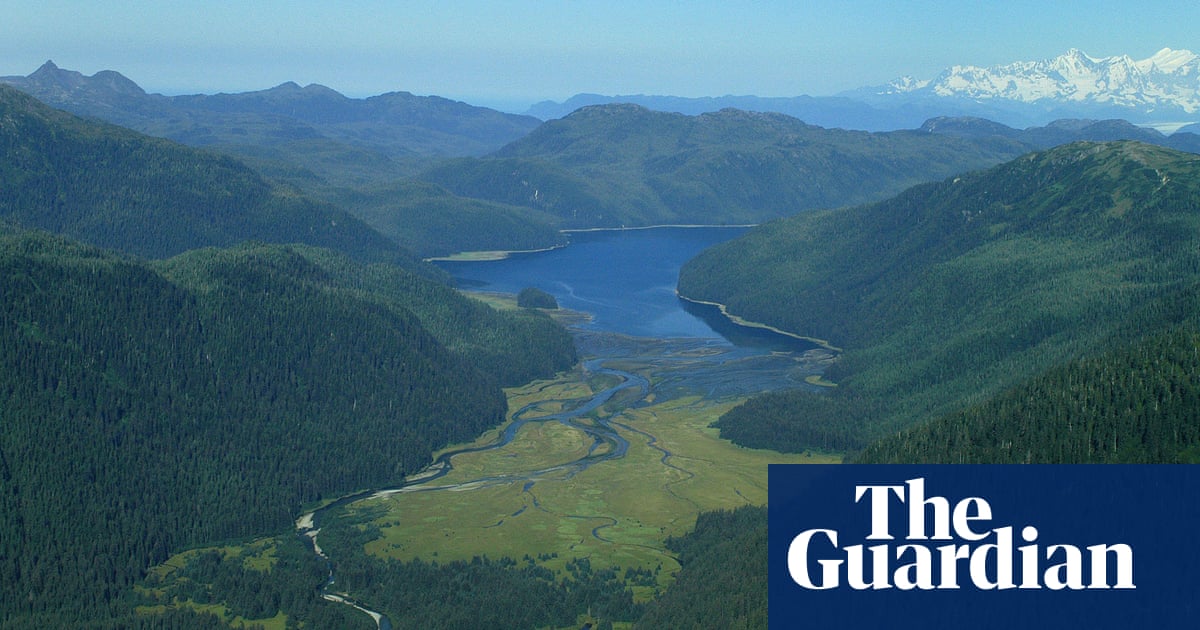Finite Carbon, created in 2009 and bought by British multinational oil and gas giant BP in 2020, is responsible for more than a quarter of the US’s total carbon credits, which it says it generates from protecting more than 60 “high credibility, high integrity projects” across 1.6m hectares (4m acres).
However, experts at the offsets ratings agency Renoster and the non-profit CarbonPlan analyzed three projects accounting for almost half of Finite Carbon’s total credits, with an estimated market value of $334m, according to analysis by market intelligence company AlliedOffsets. Renoster found issues, including trees in a project in the Alaska Panhandle that were probably never in danger of being cut down in an already extensively logged area. Of the credits Renoster looked at, they found that about 79% should not have been issued.
Renoster, a company mostly used by prospective buyers of carbon credits to help them avoid those without real climate benefits, was commissioned by the non-profit newsroom SourceMaterial to examine Finite’s projects. CarbonPlan provided additional analysis.
Because carbon credits were always a way to cheat the system and just say they were doing something. It was never meant to help anyone but corpos.
Carbon credits could potentially work if it was actually measured direct carbon capture, not “theoretical carbon captured in the future” or “carbon capture that would have existed anyway”.
Trees should never be used for “credits”. I see companies planting trees in Australia and selling the credits. Australia where fires rage every summer burning the forests to the ground. It’s a more or less (depending on the point of view) natural cycle and imo any tree planting in Australia is at best carbon neutral.
Trees aren’t completely ineffective at carbon capture, they just need to be used properly and with knowledge of their limitations: much of their carbon will be released rapidly in the event of a fire (around 20% of a tree’s mass is underground, which is why I don’t say all), the carbon they captured will be released over a course of years after they die, and carbon capture rates aren’t static and will sharply decline at a certain point. To keep such a project going requires continual replanting, much of which can be accomplished by the trees themselves if the project is done properly.
Most tree based carbon credits are pure scams and were always intended to cheat the system. Done honestly, we could still use trees for carbon credit but you’d need a LOT more trees per unit credit (compared to current scheme rates if they were even honest) and the project would have to estimate likely potential carbon losses and bake those into the valuation.
You don’t need continual replanting - they have seeds, remember? A later seral stage forest has typically gone through the thinning phase, where the best trees out-compete the others and choke them out. Anything that germinates now needs to compete with the overstory.
As an aside, we can only really effectively use trees for sequestration in areas that were not productive forest before. That is, you can’t clear cut a bunch of shit, disturb the soil, and make an oil sands project and hope to come out ahead in terms of emissions/sequestration lost (without even considering oil production emission). Reclamation can help you get back to where you were, maybe… But to out perform a natural system is a tall order.
You don’t need continual replanting - they have seeds, remember?
That’s what I was implying with the bit about “trees accomplishing replanting themselves”, but I can see how that’s not clear.
Overall I super agree. My grad studies (put vaguely so I don’t dox my ass) were the microbiological aspect of a project examining carbon cycling in various growth stages of forest. Some people shit on trees as a method of carbon sequestration but a healthy, diverse forest can really pack it in, especially in early to mid seral stages, and retain it long term.
Plus humans have deforested the hell out of so much of the planet, returning some of it to closer to its previous state has far reaching benefits beyond chipping away at climate change.
Some people shit on trees as a method of carbon sequestration but a healthy, diverse forest can really pack it in …
That a probelm tho, esp when it’s companies doing the planting … because they plant harvestible, money-making trees (ie: jackpine) only. No spruce, other pine, poplar, oak or whatever else is indigenous to the area.
Agreed, but shitty, self-serving execution isn’t a tree specific issue. It’s a shitty capitalist company putting profit above preventing global catastrophe issue. Unless that’s prevented, they’ll do the same to every sequestration method possible.
I kind of shit C sequestration in general, because I think a lot of the methods out there are pipe dreams, pushed by some C-suites.
To even have a hope in hell of dealing with climate change we need a full transition to renewables, whatever that looks like (I’m not fussy). It’s like trying to spend your way out of debt otherwise, or at the very best, taking on debt to invest, and hoping that the rate of return outpaces the rate of your loan interest.
Part of the reason I dislike the tree planting method for C offsets for a few reasons:
-
As you indicated, you can lose your progress to fire, which is becoming increasingly common due to climbing temperatures (loan interest goes brrrrrr…)
-
All C storage is temporary in biological systems. While some forms can be really, really recalcitrant (biochar: half lives of 800 years or more), eventually it all gets released. This isn’t necessarily a bad thing, and is in fact how biological systems work, and must work to have balance, but we need to literally need to remove carbon in perpetuity from the system, as the source was geologically locked away til someone let some monkeys who were far too curious and good at running into the biology lab.
-
When numbers are the target, forest diversity suffers. Oh fab, you planted a gazillion short-lived Aspen. Thanks for that. The deer are gonna love it but a lot of other stuff is gonna wish it had niche space.
I’m totally with you on the deforestation/diversity part, but I think we are asking too much from trees, and for humans to not be lazy, shitty capitalists who can’t see past the end of their collective noses.
I’m not saying I have an answer to C storage; there are some geological storage methods (like storing in tailings) that look super cool, and would remove the C for much longer times, but I’m not holding my breath, for many of the reasons I’ve touched on. Don’t even get me started on CCS plants like Hieldelberg’s pet project.
Where I see C storage coming in, is a way to minimize the impact of future projects, in the way of scrubbers, or direct deposit methods rather than hoping to suck emission right out of the air, after the fact.
-
Even if the trees are broken down by bacteria or fungus, they release CO2. The only solution for tree-based carbon capture would be to bury them way underground, and next to some nuclear waste.
Keep in mind that decomposition is for the growth and maintenance of the organisms doing the decomposing, meaning some of that carbon is incorporated into the decomposers, not released to the atmosphere. It would take years or even decades for a dead tree to release most of its captured carbon to the atmosphere. It will eventually happen, though, which is why you need a continual cycle of new growth that helps minimizes net losses due to decomposition.
It’s not perfect but it’s something and done right, which the vast majority of tree carbon credit programs are NOT, is a self perpetuating method of carbon capture.
True, but I wonder how much is retained vs released. You can get little fungus CO2 generators so I assume a significant amount is released.
https://www.mushroomsnaturallystl.com/store/p21/10%23_CO2_Generator.html
IIRC, the reason old trees were able to sink carbon into oil was because they sunk underwater and didn’t decompose in an aerobic manner. Gotta get that carbon back into the deep underground somehow.
This isn’t new, and this isn’t limited to oil companies. Many carbon-credit “issuers” have scummy practices, and many others are misleading despite best intentions
If you don’t cause the carbon to be captured, it’s not a credit. If you protect existing trees, no new carbon gets captured that wouldn’t otherwise. Plant the trees on land that you cannot lease/sell for logging. THAT’S a credit.
I don’t earn $500 by not buying the LEGO THE LORD OF THE RINGS: RIVENDELL™, I simply didn’t spend it. See how a credit is different from stopping a loss?
So to fix that all they need to do is endanger some trees? Seems easy enough to fix.
King of the Hill already did an episode on this. Not the reboot. The original show. Which ended I think around 2012? And the episode was probably much older than that. Its hard to date shows like that, because it’s animated. Season 2 onward all looks and feels the same. But the episode probably aired in 2002? Maybe?
This is the best summary I could come up with:
Renoster, a company mostly used by prospective buyers of carbon credits to help them avoid those without real climate benefits, was commissioned by the non-profit newsroom SourceMaterial to examine Finite’s projects.
The US treasury secretary, Janet Yellen, in May unveiled new principles to help strengthen the carbon market in an effort to “address significant existing challenges”, saying she had seen too many examples of offsets which didn’t represent real emissions reductions.
Last year the Guardian, SourceMaterial and the German newspaper Die Zeit revealed that as many as 90% of the most commonly traded offsets may be practically useless in mitigating global warming.
The former Sealaska executive vice-president Rick Harris said at one point prices for chartering helicopters dropped to such low levels that the company could afford to hire them to cut down low-value pulp logs.
Dave Clegern, public information officer for the California Air Resources Board (Carb), said: “If trees on steep terrain are valuable enough to warrant the cost of getting there and moving logs down the mountaintop, then they may be included in a baseline calculation.
Recent years have seen tribal lands ravaged by wildfires made more extreme by climate change, and there is a realization that carbon markets have played a role in allowing companies to pollute.
The original article contains 1,876 words, the summary contains 211 words. Saved 89%. I’m a bot and I’m open source!






